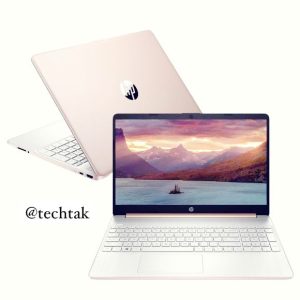Hewlett-Packard (HP) has been a household name in the tech world for decades, and their laptops have played a significant role in shaping the way we work, learn, and connect. In the year 2000, HP laptops were at the forefront of a technological revolution, offering a blend of power, portability, and affordability that was changing the computing landscape. This article delves into the history of HP laptops, focusing on their key features and impact in the year 2000.
A Brief History of HP Laptops (Pre-2000)
HP’s foray into portable computing began in the early 1980s with the HP-IL, a bulky “luggable” computer designed for engineers and scientists. This was followed by the HP Portable in 1983, a more user-friendly offering but still weighing in at around 28 pounds. The introduction of the HP OmniBook 300 in 1993 marked a turning point, offering a true “laptop” experience with a weight of under 5 pounds and features like a built-in trackball and color display.
The late 1990s saw HP refine its laptop designs, introducing the Pavilion series aimed at home users and students, and the business-oriented HP Brio with its innovative “butterfly keyboard.” By the year 2000, HP laptops were a major force in the market, competing with industry leaders like IBM and Compaq.
HP Laptops in the Year 2000: Key Features and Impact
The year 2000 witnessed a significant leap forward in laptop technology. Processors were becoming faster, with Intel’s Pentium III chips powering many HP laptops. Hard drive capacities were increasing, allowing users to store more data and applications. The rise of the internet also influenced laptop design, with features like integrated network cards and 56k modems becoming standard.
Here’s a closer look at some key features of HP laptops in 2000:
- Processors: Pentium II and III processors offered significant performance improvements over previous generations, allowing users to run more demanding applications like business software, early games, and multimedia programs.
- Displays: While high-resolution displays are commonplace today, the year 2000 saw a shift towards larger and clearer displays. Many HP laptops offered 12.1-inch or even 13.3-inch screens, making them more suitable for extended use.
- Storage: Hard drives were rapidly expanding in capacity. Typical laptops in 2000 offered capacities ranging from 4GB to 8GB, a significant improvement over the limited storage of earlier models.
- Operating Systems: Microsoft Windows 98 and the newly released Windows 2000 were the dominant operating systems. These offered improved multitasking capabilities and user interfaces compared to Windows 95.
- Connectivity: Integrated 56k modems allowed users to access the rapidly growing internet. Some higher-end models even featured built-in Ethernet ports for faster network connections.
- Design: HP laptops in 2000 offered a variety of designs. The Pavilion series catered to home users with sleek, colorful designs. Business-oriented models like the Brio focused on functionality and durability. Overall, laptops were becoming lighter and more compact, making them more portable and convenient.

The Impact of HP Laptops in 2000
The availability of powerful and affordable laptops from HP had a major impact on various aspects of society in the year 2000.
- Increased Mobility: Laptops enabled people to work, learn, and stay connected from anywhere with an internet connection. This facilitated the growth of remote work and the “mobile professional” concept.
- Educational Transformation: Schools and universities began incorporating laptops into their curriculum, allowing for easier access to learning materials and fostering computer literacy.
- Growth of the Internet: Affordable laptops played a significant role in the widespread adoption of the internet. People had greater access to information, communication, and online services.
- Home Entertainment: DVD playback capabilities on some laptops allowed users to enjoy movies on a portable device, contributing to the growing popularity of home entertainment.
HP Laptops: A Legacy of Continued Innovation
Since the year 2000, HP laptops have continued to evolve, becoming even more powerful, compact, and feature-rich. The introduction of Wi-Fi, longer battery life, faster processors, and solid-state drives transformed the way we use laptops today. HP has also embraced new design trends, offering sleek ultra-thin notebooks and convertible devices.https://www.hp.com/in-en/shop/laptops-tablets.html